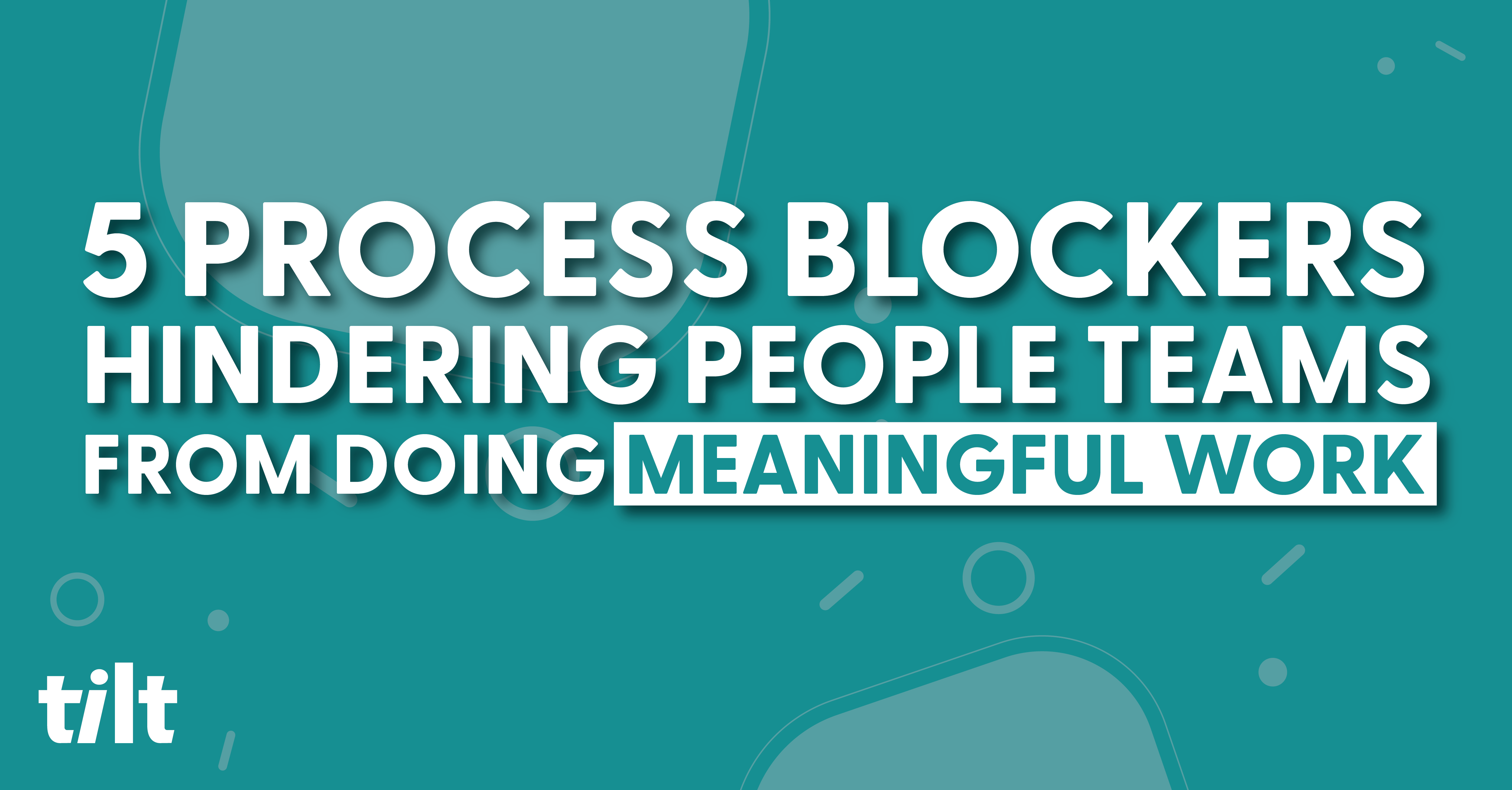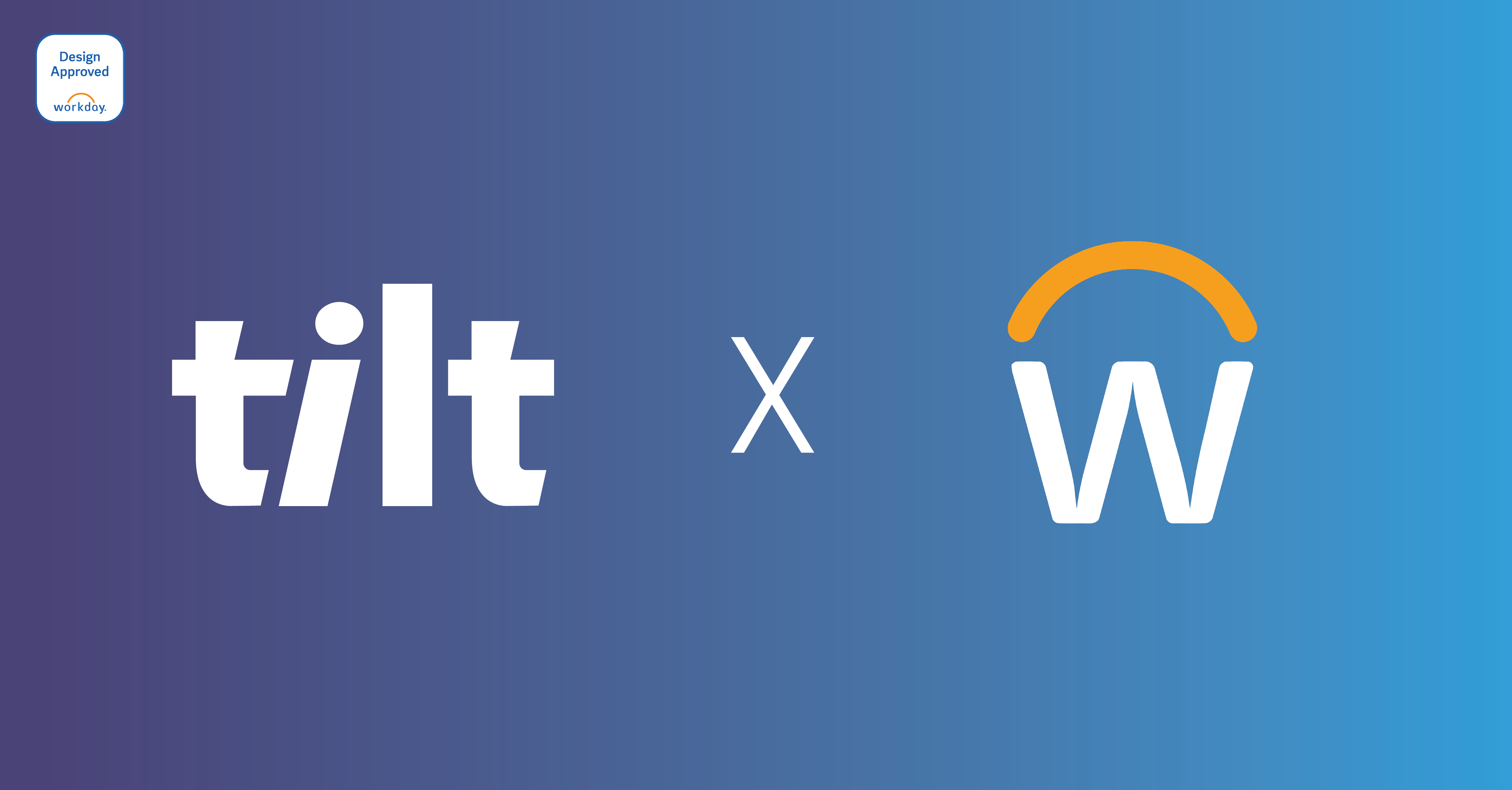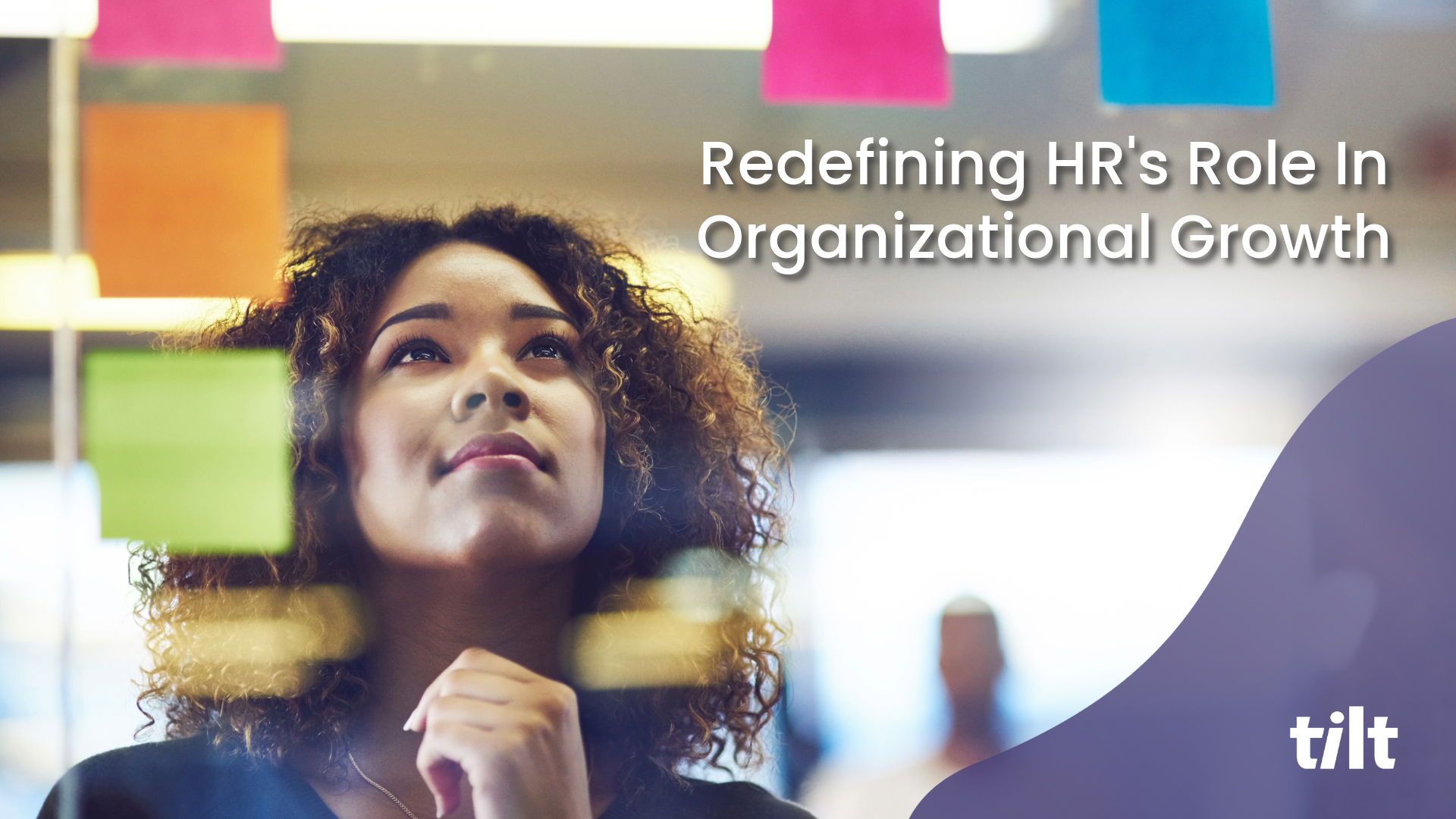Work would feel a lot less like work if there wasn’t much frustrating work getting in the way of our work. The way work works out for many People Ops and HR pros, however, is that the meaningful work that excites and fulfills you is often at the mercy of administrative yada yada and process gobbledygook (these are technical terms).
What are these process blockers that get in the way? How does identifying them help free up you and your team to be the best version of themselves? Well, as the former head of research at GM, Charles Kettering, (allegedly) said, “A problem well-stated is half solved.”
Recent studies show that meaningful work is more closely tied to happiness at work than it ever has been. HR pros agree that repetitive work, not having enough time, and insufficient resources are major impediments to success, so as you look through this list of 5 common process blockers, it may be beneficial to reflect on how many are in your team’s way of doing the impactful work you’d love to be doing. Once the blockers have been identified, you can begin to eliminate them and watch your team’s productivity, satisfaction, and motivation soar.
1. Communication breakdowns detrimental to productivity
Clear communication is a vital component of any well-oiled HR team. Blocks in your processes can happen from poor communication for a variety of reasons, such as when employees or their managers fail to provide all the necessary details when submitting leave of absence applications, benefits enrollment, or employee data updates. All of this gets compounded when you have to send follow-up communications with a classic “per my last email.” Is there a more frustrating task than repeating yourself multiple times for the same ask?
Having ineffective employee feedback channels is another process blocker that can slow your team down. Without streamlined employee surveys or regular check-ins, it becomes challenging to gauge employee sentiment and take appropriate actions. This can impede the identification and resolution of HR-related issues, meaning the process to improve your organizational processes is getting in the way of you making those processes improvements.
How to improve communication: If holistically improving communication had an easy fix there would be a couples therapist making billions. That said, People Ops and HR teams do have a few options at their disposal. Implementing clear and comprehensive communication policies is a start, and doing so effectively will require buy-in from leadership in order to foster a culture that encourages open dialogue and feedback. You can also leverage technology that streamlines communication channels across your organization, and if you deem it important for your org, you can conduct training sessions on effective communication.
2. Inefficient technologies that provide more headaches than help
Paradise isn’t a private beach with your feet dug into soft, warm sand, listening to the dulcet tones of small crashing waves rolling in and out with the tide. Paradise is having functional (that’s the keyword) technology that does the tedious, repetitive work that you and your team are responsible for. Legacy HR systems might be “the way we’ve always done it,” but they can seriously hinder HR processes by limiting your team’s efficiency, security, and data accuracy.
If your tech stack has minimal automation features and doesn’t allow for self-service, your team is manually doing administrative yada yada and employee support tasks that are getting in the way of bigger, more fulfilling initiatives. Maybe you’ve been wanting to establish a mentorship program to develop your professionals, or perhaps you’ve been wanting to implement a holistic employee wellness program, but your team’s day-to-day is so bogged down with process gobbledygook that there’s never enough time.
How to improve your tech stack: Auditing your tech stack is a recommended activity you should do on a regular basis. Technology is moving quicker than ever, and while that can seem overwhelming at times, what it also means is that there are new effective solutions popping up every day that can remove your biggest process blockers. Stay up to date on the latest tech and give your team the freedom it needs to shine bright!
3. Understanding and adhering to complex legal and compliance requirements
As if you weren’t aware, staying up to date with current employment laws and regulations at a local, state, and national level takes a ton of time, and no matter how much time you spend, there’s always that little seed of doubt in the back of your mind saying, “Are you sure about that?” Though you aren’t a legal expert, you’re responsible for being current on everything from leave law regulations to labor rights to anti-discrimination legislation.
If you’re doing this on your own there’s a good chance a disproportionate amount of your day is being spent rifling through Google and praying you’re comprehending the jargon correctly. Adhering to legal and compliance requirements is a major productivity pain point and you certainly aren’t alone.
How to improve your legal and compliance processes: If you’re struggling with compliance confidence, it might be time to look to outside sources for your woes so you aren’t hemorrhaging. One scenario that shouldn’t be overlooked is leave of absence management. The laws are numerous and ever-changing, so if you are currently outsourcing your LOAs, make sure the solution you choose has an in-house L&C team to keep your worries at bay.
4. Change management rarely goes as planned
Humans are creatures of habit, and since our worlds are constantly changing around us we tend to grow an attachment to whatever consistent routines we do have. With work it’s no different, even if those routines are detrimental to organizational growth or process improvements. Implementing new policies, procedures, or technologies often breeds some level of resistance from employees or managers who are accustomed to existing ways of doing things.
Overcoming resistance to change can be a significant challenge as you need to communicate the benefits of change, provide adequate training, and address concerns to ensure the smooth adoption of new processes. When change management isn’t handled properly and doesn’t go as planned, your team gets saddled with a hindrance cocktail of administrative hand-holding, fielding questions ad nauseam, and navigating the reality that a significant subset of your employee population hasn’t adopted the change and is working in old systems or using outdated procedures.
How to ensure change management is a success: A good starting place is to take stock of how process blocker number one might be negatively impacting change management. Clear, direct, two-way communication is vital to rolling out successful change management. If your change management involves a new 3rd party system or tool, make sure that they have a helpful and seamless change management plan in place so that you don’t have to do any of the dirty work.
5. Limited resources to make the impact you desire
Limited staffing, budgetary restrictions, and time constraints. The anxiety trifecta of the “doing more with less” nightmare so many HR and People Ops teams face today. If you’re overwhelmed with an excessive workload, or lack the necessary resources, it can dramatically hinder your ability to effectively execute your daily demands, respond to employee inquiries, and handle strategic initiatives.
How to advocate for your team and get resources: If you’re operating with limited resources, some of the most important things you can do is prioritize your tasks, expectation-set and openly communicate (there’s that word again) with leadership so they have a clear picture of what you can accomplish with the resources at your disposal. Make the most of the resources available and share your successes with leadership. Similarly, advocate for tools that can help do the manual work that’s eating up your team’s time so that you can do more with the bandwidth you do have. It’s really helpful to market your team internally (here are some tips to do so) in order to get the resources you and your team need to do the meaningful work you love.
About Tilt
Tilt is leading the charge in all things leave of absence management through easy-to-use tech and human touch. Since 2017, our proprietary platform and Empathy Warriors have been helping customers make leave not suck by eliminating administrative burdens, keeping companies compliant, and providing a truly positive and supportive leave of absence experience for their people.







